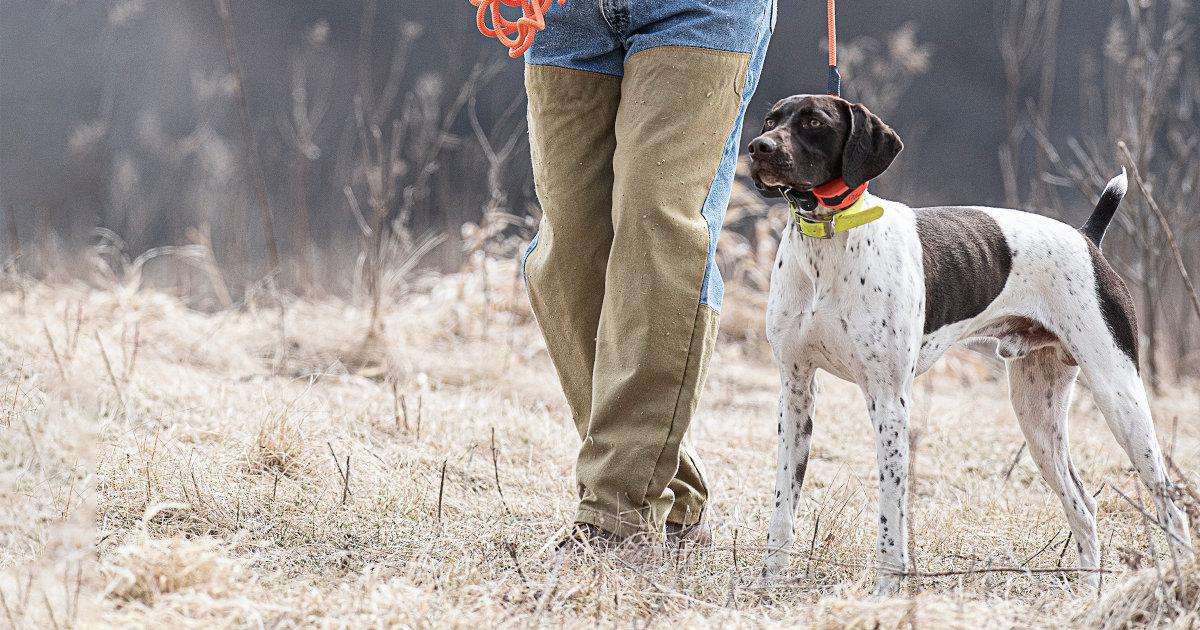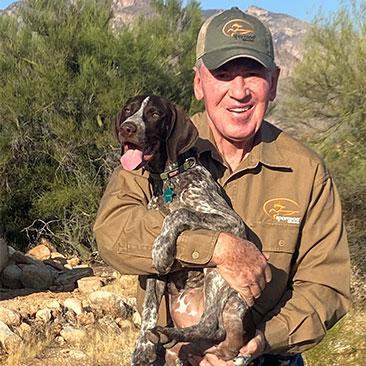
How to Avoid Hot-Weather Trouble
Posted by LTC Jim MorehouseI would hope that most hunters understand how important it is to keep their dogs in shape year-round. You certainly can’t let your dog lie around all summer and then expect it to put in full days when hunting season opens this fall.
However, training and exercising your dog year-round does present some challenges. Regardless of where you live, you’ll always have to deal with weather extremes. In the summer, it easily reaches 110 degrees F at my kennel in Arizona. Thankfully, I own and train German short-haired pointers, which are well-suited for handling heat. That doesn’t mean I’m going to run them in the middle of the day, but their breeding and physical makeup does allow me to work them in weather that wouldn’t be suitable for some other breeds.
Let me share some of the core principles of my training regimen based on years of training and hunting with dogs in hot weather.
- A dog that’s in shape handles hot weather better. All else being equal, a dog that’s in peak condition because of constant exercise throughout the year and also remains at a consistent weight is less likely to get into heat-related trouble. As with humans, it takes more time to build endurance than it does to lose endurance, so make a commitment to finding ways to keep your dog active year-round. And another thing regarding weight: Don’t let your dog’s weight yo-yo. Just because it’s the off-season doesn’t mean it’s OK to let a few extra pounds pile on. It’s tough on a dog’s body when that weight bounces up and down.
- Your dog won’t tell you when it’s in trouble. A hard-charging dog doesn’t know when to quit. Therefore, you can’t assume that if your dog starts to get stressed from the heat or starts to become dehydrated that it will stop. A dog will literally run itself to death in its drive to find the next birds. Even if you think you’re giving your dog enough water (we’ll cover that in a moment), there’s a quick check you can do to check for dehydration. Grasp the skin on your dog’s back, up around the shoulder blades. Pull up, and then release. The skin should snap right back. If it retracts very slowly, that’s a sure sign of dehydration and that means you need to stop, get in the shade and get that dog properly hydrated before heading back to your vehicle.
- Water, water … and more water. Some dogs will drink every ounce of water you offer, while others, even when they’re hot and tired, need to be coaxed into drinking. Know your dog and find ways to get it to drink enough. During guiding on warm days, I would carry 250 ounces of water for two dogs. That means I had a full Camelbak vest, plus six 24-ounce squirt bottles. That was always enough to get us through a three-hour morning hunt until we got back to the truck for lunch and replenish. Teaching your dog to drink from a squirt bottle when it’s a puppy will really pay off in convenience as the dog gets older because you won’t need to carry a drinking bowl.
- But one word of caution about water. While you want to encourage your dog to drink, don’t let it guzzle. A belly full of water sloshing around while the dog is running can lead to stomach torsion. We normally think of that as something that happens to a dog that runs too hard after eating, but it can happen with too much water as well. Also, if you think your dog will benefit from an electrolyte drink such as Gatorade, be sure to dilute it by AT LEAST 50 percent before offering it. Dogs cannot process straight Gatorade in the same way that humans do.
- Skin and footpad considerations. OK, so you feel comfortable that your dog can handle a little workout on a hot day, and you’ve got plenty of water. Pay attention to the ground temperature before you head out for a walk or jog. On a sunny day, the temperature of asphalt can be much higher than the air temperature by as much as 20 degrees or even more. You wouldn’t walk barefoot on 120-plus-degree asphalt, and you can’t expect your dog to, either. Also, please realize that dogs can get sunburned, just like people can. Aggressively trimming up your Brittany or setter before heading South for a quail hunt is not a good idea.
- Lighter-colored dogs seem to perform better in hot weather. I would never choose a dog based only on its coat color, but because I live in the Southwest, I really favor predominantly white shorthairs. A lighter coat is absolutely an advantage when it comes to handling the heat. Let me emphasize that I have nothing against a liver-colored shorthair or any other dark-coated dog, but in the heat, lighter is better.
It seems like there are never enough days in the hunting season. That means you have to go when you can, even if the weather isn’t ideal. Making sure you and your dog are prepared to handle hot weather will hopefully mean you get to spend more time in the field.

LTC Jim Morehouse
Tuscon, AZ
Raised in the Finger Lakes area of New York State, Jim was involved in hunting and birddogs from an early age. Upon graduation from college, he joined the US Army in 1967. He served until 1989, retiring at the rank of Lieutenant Colonel. After his retirement, Jim and his wife...
Related Products




